“Looking back in History, we see that the origins of fashion portray the character of a world built by manual techniques and natural fibers. Design was carried out as a reflection of culture and society. These are the images of an extinct world we need to recover.”
– Adriana Marina, Founder of Animana
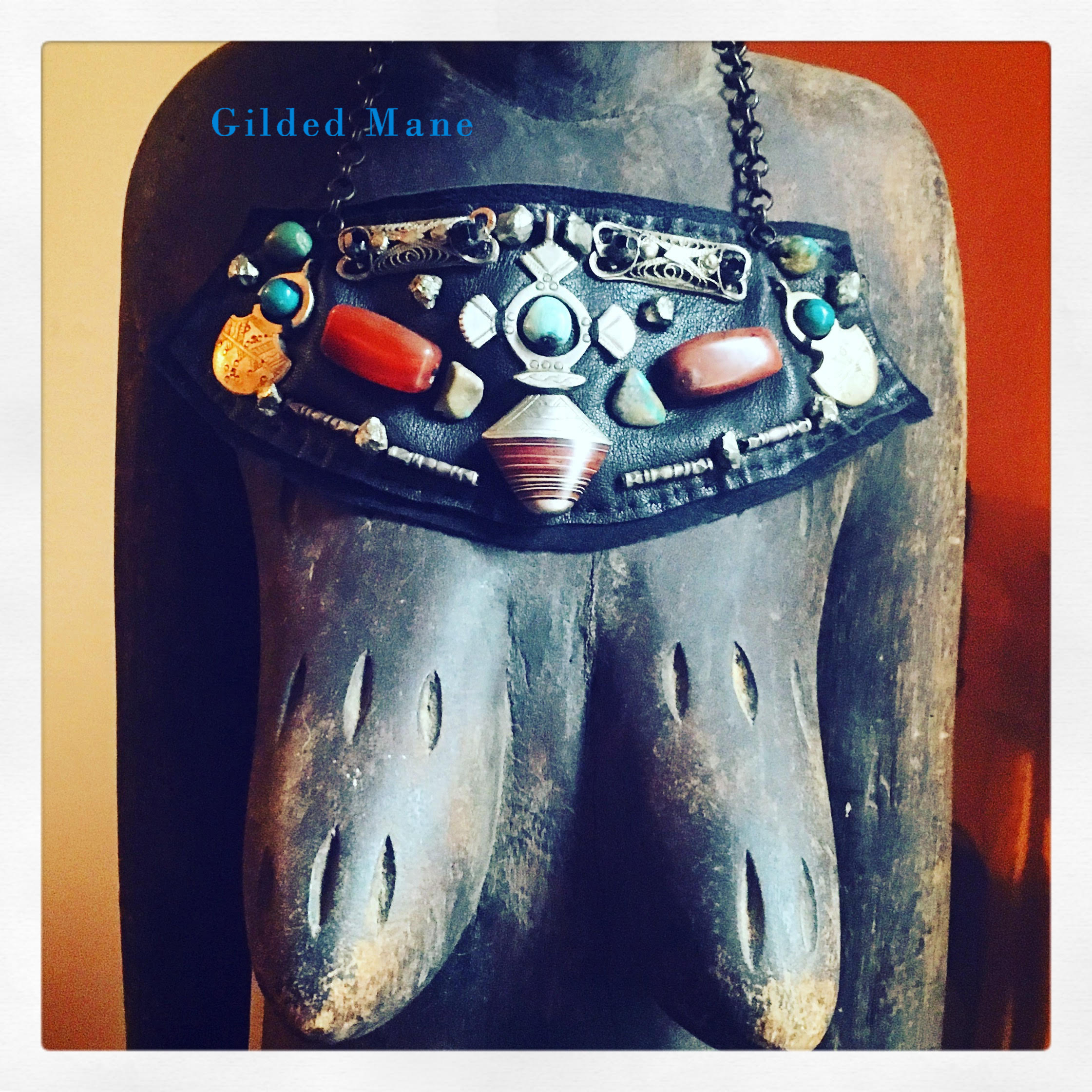
Anyone with a vested interest in fashion, knows that the industry is in the midst of an existential crisis. Like the mythical dog “Cerberus,” the modern day hybrid that is currently terrorizing the fashion flock has three heads – social media, economic uncertainty, and climate change. While each cultural phenomenon has generated problems that might be considered manageable in isolation, together they create a formidable beast. Social media, which provides a real-time digital window into the inner sanctum of high-fashion, often creates unrealistic expectations. Just because a sample line has been sent down the runway, a high number of Instagram likes cannot alter the laws of physics. Weaving fabrics, fitting samples, and sewing garments, are still labor intensive processes. Therefore, this delay in customer gratification, when coupled with economic uncertainty, means that there is a palpable demand for fast-fashion knockoffs. And as we begin to see the effects of climate change, the current merchandise does not always sync up with weather that is becoming harder to predict. While I enjoyed last year’s unusually warm winter, I doubt anyone was buying coats and sweaters in NYC when it was seventy degrees on December 1st.
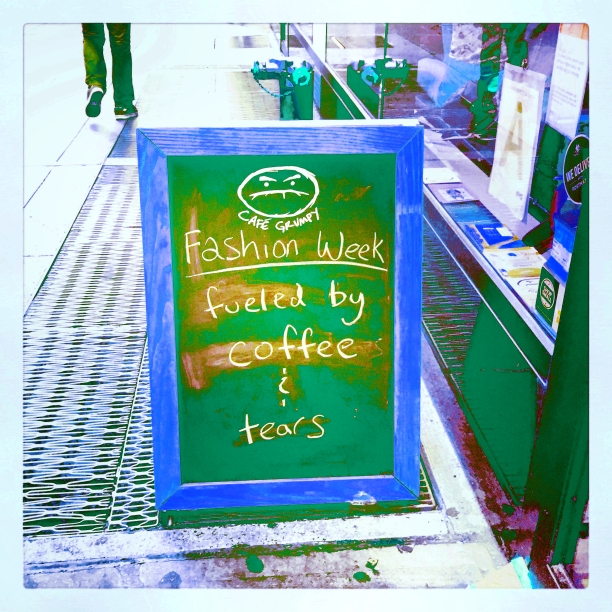
Quality and price are the determining factors in how businesses fare in this new reality, as well as the Pantone shades [the industry’s standard color system] they choose to express their particular malaise. As one might expect, there are many shades of blue. On the surface, the Chambray and Indigo drenched color palette is an ode to denim. While there is nothing revolutionary about the cotton twill weave, the rebellious spirit of the Sixties has returned, manifesting in civil rights protests, political activism, and distressed flares that are fresh out of the stone wash. But where 2016 differs from the era of Jimi Hendrix, is in technology, as social media has emerged as the ultimate frenemy.
Fast-fashion is a relatively new concept, as the fabric guzzling retail giants used to have to wait for Vogue and Harper’s Bazaar to go to press in March and September. But with the ubiquitous presence of the camera phone, fashion insiders share the latest trends as soon as they are unveiled. With so many proprietary designs being thrust into the public domain, as well as sales falling short of projections, the whole business model is up for revision.
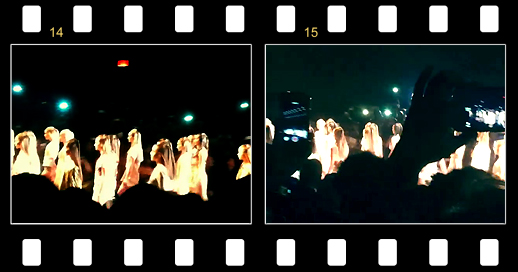
There are at least two designers this season, who have not only recognized the consequence of over-sharing, but have implemented new strategies for dealing with the omniscient lens – Tom Ford and Tommy Hilfiger. The team at Hilfiger created an Instagram hashtag #TommyNow specifically for the carnival themed event, while Tom Ford’s followers had the option to shop directly from his feed @ Instagram.tomford.com. The decision to show in-season merchandise indicates a pivot towards consumers, since buyers don’t actually write their orders until they see the collections up close at Coterie. As a result, both companies have figured out how to capitalize on the publicity that is generated by the Instagram news-feed, thus boosting sales instead of piracy. But climate-change, the third demon-head, is the foe that threatens to undo us all. It is also what gets the least amount of media coverage, which makes it all the more dangerous.
When we think of climate change, the oil and automotive industries are obvious culprits, but after a little research, I found out that denim, the “comfort food” of the American wardrobe, is one of the worst textiles for the environment. The process of dyeing and distressing denim is very water intensive, and then there is the cultivation of the cotton fiber itself. When we hear the word “organic,” we automatically think of food, and over the last ten years, we’ve been educated about the nutritional benefits of organic produce, but what we don’t consider, are the effects of chemicals and pesticides on the farmer, as well as the land. We also forget that a large percentage of the carbon emissions that we’re responsible for, which is a result of our consumerism, is being released into the atmosphere of the countries where our clothing is produced.
“You know the color in fashion next season by the color of the rivers in China.”
Linda Greer, Director of Clean by Design
We have many cultural blindfolds, but one that is rarely discussed, is First World Privilege. First World Privilege is the expectation of drinkable water, breathable air, and a functional justice system, among many other perks we take for granted. Since we have legislation that protects our right to clean air, we are oblivious to the air pollution that accompanies such large-scale manufacturing. But when documentary filmmaker Josh Fox went to Beijing, he found out that civilians monitor fluctuations in air quality the way we check the weather (see the difference for yourself via The Worldwide Real Time Air Quality Index).
According to Fox, if we continue releasing carbon emissions at such a breakneck pace, we will breeze past the “point-of-no-return” at some point next year.
“At two degrees warming, sea level will rise between 5 and 9 meters. Most of the world’s populations, most of the world’s cities, are on coastlines. We will hit 2 degrees of warming by 2036. And many analysts say the window to keeping us at 2 degrees in terms of curtailing emissions, closes in 2017… At 2 degrees warming, 30-50% of all the species on the planet would go extinct.”
– Josh Fox, documentary filmmaker
“How to Let Go of the World and Let Go of all of the Things That Climate Can’t Change”
If that isn’t enough of a stern warning, The Christian Science Monitor just published an article called “Earth CO2 levels: Are we at the point of no return?” while MSN warns that New York City is at risk of flooding every two decades. It may be hard to predict what our planet will look like in twenty years, but plans are already being made to turn Mars into the ultimate travel destination by the year 2030. Feeling overwhelmed by all of this information, my first instinct was similar to the one Fox had in his film, which was to shut down, or more specifically, to become a shut in and take photos of butterflies.

It is one thing to have a dim awareness of a potential threat that may occur at an unspecified time. It is something else entirely to have a time-stamped expiration date on the conspicuous consumption we all enjoy, and to watch in slow motion as our collective ship heads straight for the iceberg, even if it is melting. Fortunately for the rest of us, Fox did ultimately leave his house, and ended up making a very compelling film, weaving his narrative out of scientific facts and firsthand observations.
“As environmentalists, we’ve been talking for decades now about saving the planet, but as I think about it, the planet is probably going to be around for some time. What’s at stake now is civilization itself.”
Lester Brown, Environmental Analyst
But climate change is actually more than just a terrifying end-game, it is a symptom of basic flaws in our cultural ideology. The faulty reasoning pre-dates the Industrial Revolution, electricity, and the invention of every carbon emitting machine. Ultimately, the seeds of our current predicament were sown with the genocide of the Native Americans. Having rejected the indigenous tribes’ belief in stewardship of the land and respect for animals as well as each other, the new settlers unpacked their beliefs along with their meager satchels of earthly possessions. Their conceit that only the lives of “civilized” human beings actually mattered, still haunts us to this day. And this isn’t the only delusion that we’ve inherited from our short-sighted ancestors. To them, this “New World” must have appeared vast and plentiful. But now we know better, and science as well as common sense tells us that our natural resources are in limited supply. As technology and air travel have made it easy for us to move about the planet, we have lost that sense of connection to the ground beneath our feet.
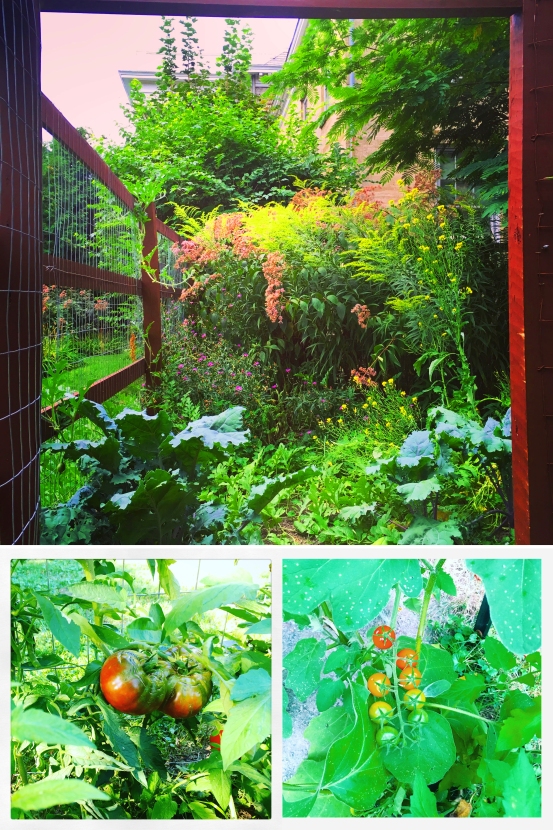
When a plot of land is depleted and fails to produce crops, we are deceived into thinking that the system works because we can simply buy our produce from another farm in another part of the world. Our economic structure dictates that money and oil are the ultimate measures of worth, but the human body is not fueled by petroleum or natural gas. Even today, Native American communities are still fighting to preserve their connection to sacred earth. The intended path of the Dakota Access pipeline cuts through the ancestral land of the Standing Rock Sioux Tribe, and a spill would be catastrophic to their culture, as well as the local eco-system. The beliefs that are responsible for our warming atmosphere and the meltdown of the polar ice caps, is the same ideology that the Standing Rock Sioux Tribe is protesting. But some of the journalists and filmmakers covering the protest have been arrested, and Deia Schlosberg could face up to 45 years in prison, simply for exercising her 1st Amendment Right. So until we examine our core values as a society, and revise them at the most basic level, then all of our proposed solutions will be mere vanity projects. Painting the ship green and calling it “eco-friendly” may boost consumer confidence, but it won’t change the outcome of our ill-fated course.
I was still processing the various truth bombs contained in the “How to Let Go” documentary, when my brother asked me to read “What Are Poets For” by Martin Heidegger.

I cannot imagine what aspect of culture Heidegger was reacting to when he chose the word “abyss” in 1971, but in 2016, plug into any media outlet and you can hear the cacophonous death rattle of our wounded patriarchy. Heidegger goes on to say that the role of the poet in “such a destitute time” is to lead the rest of humanity out of the abyss, “to sense the trace of the fugitive gods” and show “their kindred mortals the way toward the turning.” This made me wonder about the role of artists and designers, who are often faced with a difficult choice – feed the body or the muse?
Aside from being a buzzword that is occasionally used as a selling tool, one doesn’t normally hear the words “sustainable” and “fashion” used together in the same sentence. Ironically, the first time I became aware that fashion could be eco-friendly was when fast-fashion behemoth H&M launched their Conscious Exclusive collection back in 2014. Given that most of the collection was already sold out only a few hours after its launch, I was lucky to find a beautifully embroidered vest in my size. And the store display was accompanied by Ever Conscious, the third installment of “Ever Manifesto,” a think-tank for sustainable design.

H&M also has a clothing recycling program and so whether their sustainability efforts are genuine or mere green-washing, I do give them credit for acknowledging the need to evolve their production practices. Eco-friendly might be a selling tool, but most consumers still haven’t made the connection between what they wear and the environment. But there are activists who are much better informed than I am, who believe that their business model is fundamentally at odds with the core principles of sustainability.
Given that the environment is well behind price on the list of consumer priorities, I was surprised that once I started pulling the loose threads, the information came as easily as an unraveling sweater. What I discovered is a growing number of designers and small businesses that have not only looked into the abyss, but are actively pursuing better methods of producing clothes. That being said, sustainability itself is a general term and the whole movement is still in its infancy. Think of where the organic food movement was ten years ago, or the first time you thought about where your food comes from.
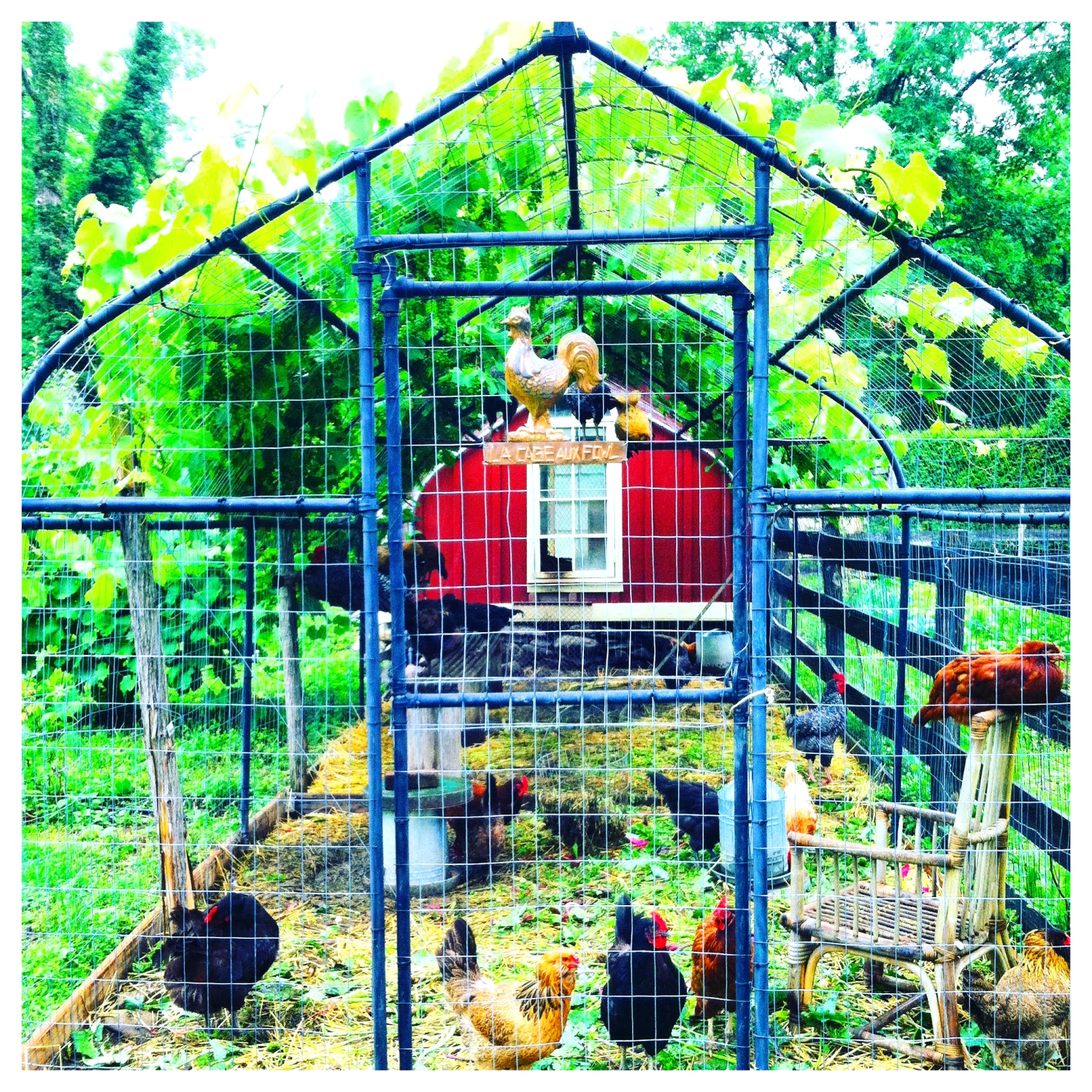
To put it simply, sustainability means that there is a symbiotic relationship between businesses and their supply chains, so that the production of goods can continue indefinitely. The default model doesn’t account for the fact that petroleum based synthetic fibers are problematic for the environment, or that the rising cost of Chinese manufacturing means that the search for cheap labor is ongoing. One could even argue that all the anxiety over the current state of the industry is because we’re beginning to sense the fallout that awaits us beyond the edge of the cliff. But acknowledging the problem is merely the beginning of a long and arduous journey. For companies that are committed to pioneering this unknown terrain, they first have to identify how they would like to be sustainable. Economic Sustainability focuses on developing long-term partnerships with workers by implementing the principles of fair-trade, while Environmental Sustainability is achieved through the use of renewable materials and minimizing overall damage to the environment. A company selling hand-knit wool sweaters, where the artisans are paid living wages, would be an example of both. (special thanks to consultant Simone Small for her insight).
The easiest way to understand the tenuous relationship between fashion and the environment is to download the podcast “Conscious Chatter.” You can listen to it on your smartphone, and each episode focuses on a different issue, from what happens to your clothes when you’ve finished with them to the value (and stigma) of hemp as an environmentally friendly fiber. And if you don’t want to rely on a company’s self-congratulatory mission statement, then there are a few different certifications they can earn as proof of their good will.

Certified B Corporation Green America Fair Trade Federation GOTS Cradle-to-Cradle
While there are a variety of online shops offering a broad range of products, an essential part of environmental and social responsibility is being able to educate buyers.
“We realize the confusion that customers have when it comes to sustainable products…so we’re trying to show high levels of quality and explain why things are priced certain ways.”
– Erika Freund, creator of Mikuti Jewelry [Debra Borchardt for WWD]
The mantra of “cheaper is better” is a large part of why we’re in this predicament to begin with, as we rarely see “The True Cost” of our disposable goods. Outsourcing labor may have made products cheaper, but the loss of jobs has done irreparable damage to our economy, and a lot of the current pressure for inexpensive merchandise is from consumers. And since I had trouble finding a single comprehensive list of eco-friendly resources, I have included one at the very end of this post. Here are some of the highlights…
MADE IN USA / CANADA
Last summer, I was on a mission to find the ideal bag for my daily commute. My criteria was that it had to be big enough to fit all my essentials, including my Microsoft Surface, but I also wanted the bag itself to be lightweight. After realizing that there is a natural heft to leather, I switched my focus to canvas.
I found what I was looking for in the bendable bag by the Montreal based Noujica. Since the cultivation of hemp in the US is in its infancy, other countries are ahead of us in terms of developing this versatile fiber, and the hemp/cotton canvas used by the Canadian artisans still looks great after a year of daily use. The vegetable-tanned leather and the screen-printed reclaimed-suede elevates the whole design.
NATURAL MATERIALS
When I upgraded my iPhone, I went on a similar quest for a case, and I was instantly reminded of how difficult it is to find interesting tech accessories, regardless of how they’re made. That was when I stumbled upon Carved. I fell in love with their Live Edge collection, but ultimately decided on a design from their Satellite Series.
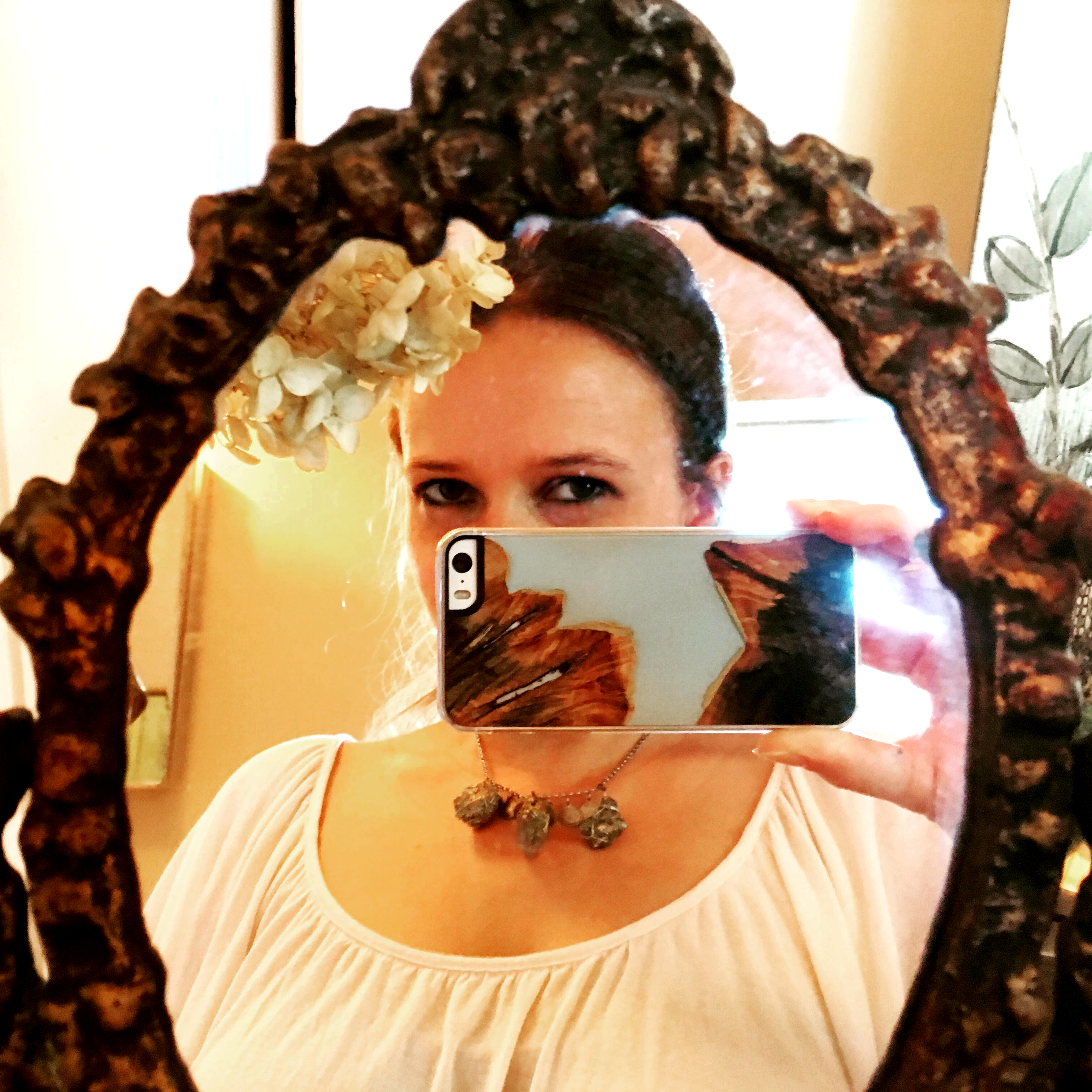
Their online shop features a unique selection of wood slices that have been mixed with dye and resin, which they will then cut to the shape of your phone as soon as you’ve finished checking out. In addition to these cases being handmade and one-of-a-kind, their wood is sourced locally from fallen trees, and utilize imperfections that are usually discarded or overlooked.
Another company that utilizes the natural beauty of wood is Mistura. In addition to their online shop, they usually have a booth in the Bryant Park Winter Village. Since wood is the primary material of their nature inspired timepieces, they have partnered with conTREEbute to plant new trees in Colombia, South America. The one I eventually chose has Hortensia flowers pressed into the face and because of the nature of their designs, no two watches are exactly alike.
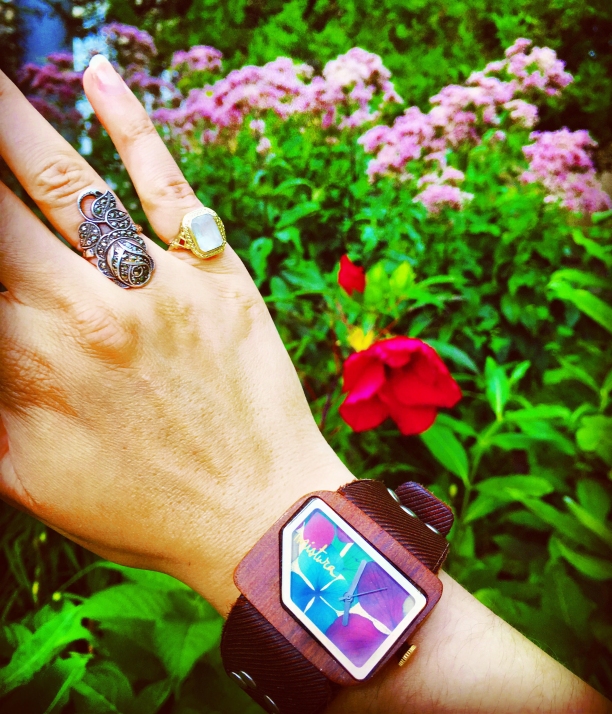
While there are a variety of natural alternatives to petroleum rich polyester – Organic Cotton, Wool, Hemp, Bamboo, Reclaimed Wood/Leather/Suede, Digital Prints & Non-Toxic Dyes – I figured out what the ultimate eco-friendly material is by pure accident on a recent trip to New Orleans. The NOLA based Queork sells shoes, bags, and cell phone cases using the bark of the cork tree. When transformed into textiles, the material is durable, lightweight, water repellant, stain resistant, hypo-allergenic, and most importantly, is harvested without damaging the plant.
ARTISAN TECHNIQUES
Since vintage jewelry is one of the signatures of my personal style, I tend to avoid any piece that even looks like it came from a retail store. I prefer my adornments to look like they’ve “been around,” that may even have a sordid past, and are content spending their golden years playing dress-up at my vanity table. For a new piece to even get my attention, it has to be truly special, and during one of those holiday markets at Grand Central, I discovered the stunning work of NYC jewelry designer, Pauletta Brooks.

Her rough-edge stones are delicately submerged in a molten gold-toned netting, and are then strung together on delicate chains. While Brooks makes everything by hand in her studio, her creations look like the heirlooms of a mermaid princes, that have been dredged from an abandoned castle beneath the sea.

Etsy is another good resource for artisan wares, but while the site was initially limited to handmade, vintage, and craft items, they’ve changed their policy, so make sure to read the biography of the shop before you buy. I found the site especially helpful in finding the right pair of earring jackets. Since the whole concept is relatively new, and many of the best vintage earrings are clip-ons, I recommend NKD Designs and Ayalah B Jewelry if you want to emulate this look.
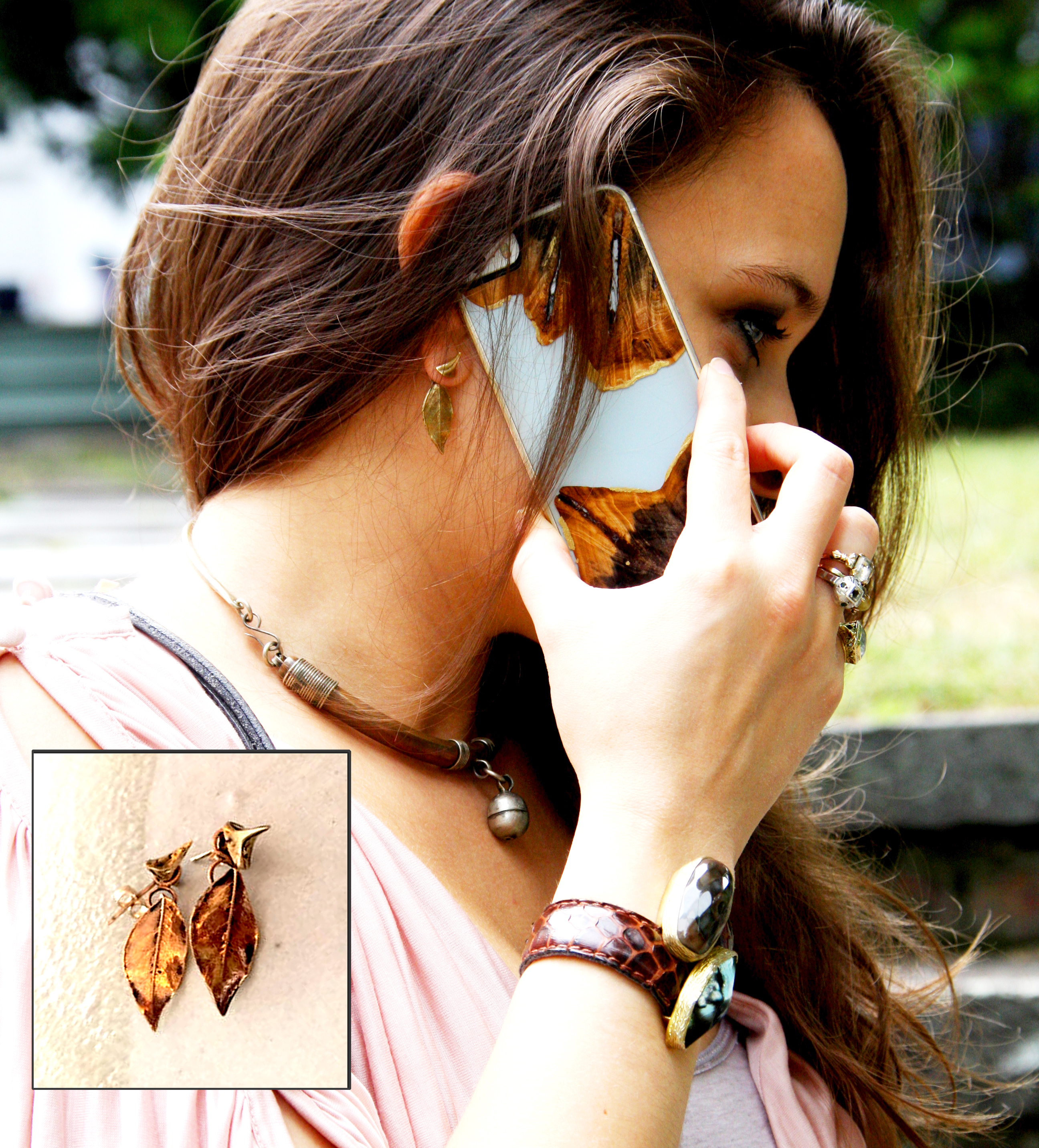
Artisan made clothing and organic food are similar in that they both represent the relics of our past, as well as being positive guides for the future. It wasn’t until the latter portion of the twentieth century that our output exploded, and the majority of our production was moved overseas. In our modern way of doing things, duplicated style comes first, which then dictates where a piece of clothing is made and by whom. But when a culture produces its own apparel, the dominant style is a natural evolution of the available resources, as well as the knowledge and skill of the local artisans.
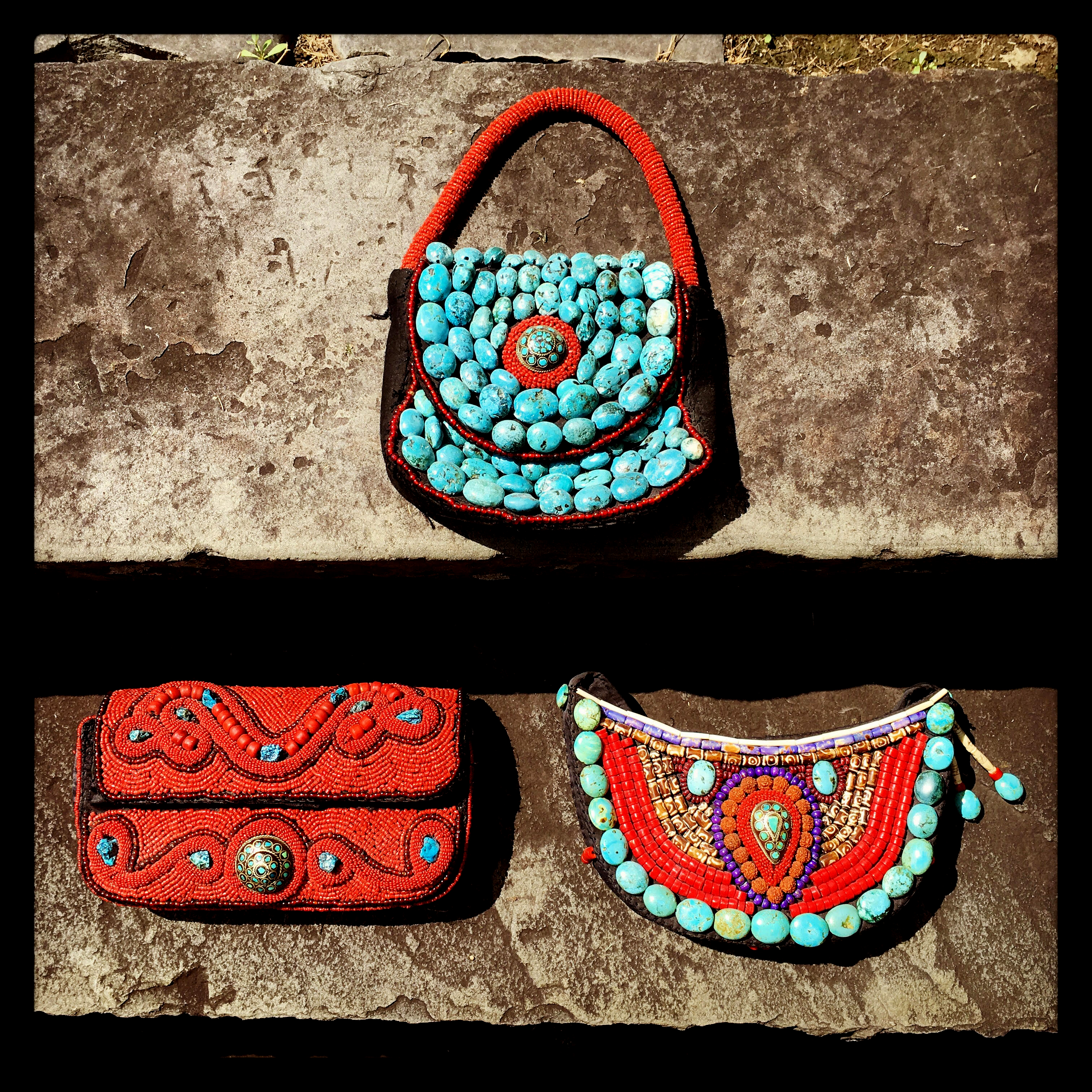
And because of globalization, we have access to the techniques of indigenous communities from around the world.
UPCYCLE / RECYCLED MATERIALS
At the very beginning of my career as a designer, before I even felt comfortable using the word, I experimented with up-cycling. I’m not going to pretend that I had any lofty ambitions of sustainability, but it was simply the easiest way for me to express a previously unknown part of myself. I took vintage sweaters, which were plain but of good quality, and embroidered images of flowers, birds, and tree branches, eventually adding bits of jewelry and semi-precious stone beads for three-dimensional appeal.
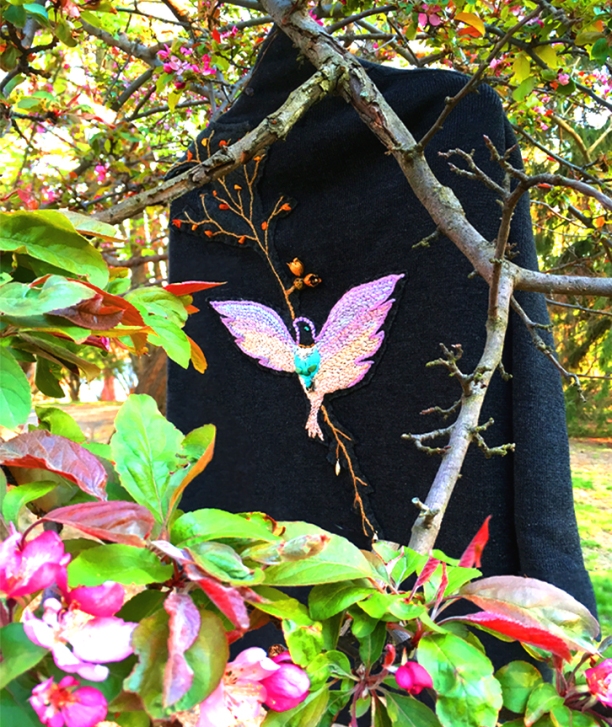
I now understand consciously that what started as blind intuition, re-working of vintage clothing and discarded jewelry, is a form of art as well as conservation, and those disparate pieces might have otherwise ended up in a landfill.

But that trick only works with items that were made well to begin with. Designs that try to embody the zeitgeist of the moment and are made poorly, will never get that second or even third chance at life.
VINTAGE / CONSIGNMENT
“The great thing about flea markets and consignment stores is that there is always hope of finding a holy grail – something that really belongs to you, that had been previously owned in error by someone else.”
– Cintra Wilson, from “Fear and Clothing”
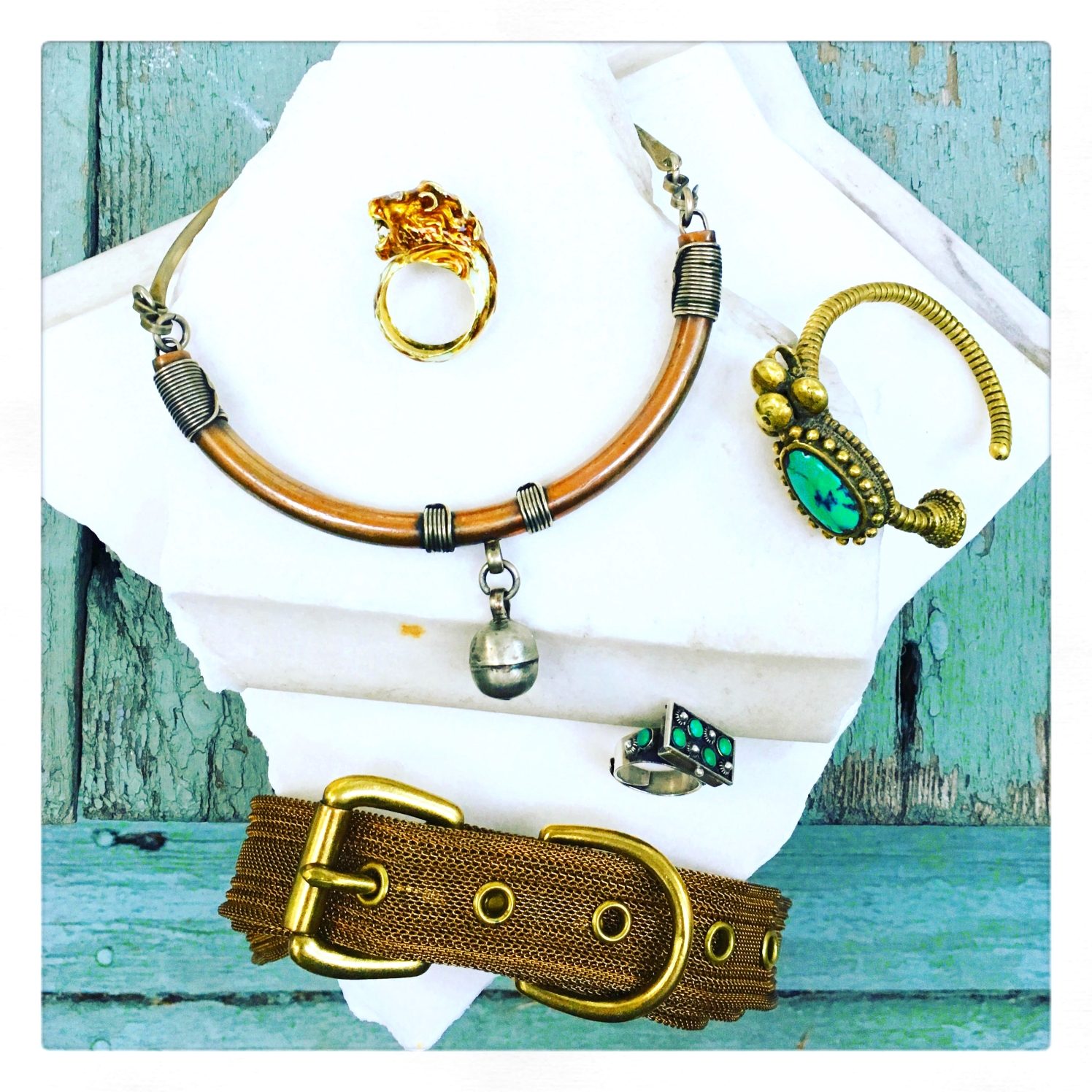
At the beginning of every season, I weed out my wardrobe and then bring those items to the consignment shops on Main Street in Beacon, NY – Vintage Beacon and Blackbird Attic. Its the best way to make space in my closet, while also knowing that my discards will likely find a new home. I also usually find something for myself as I wait for Angela or Michelle to sort through my previously-loved items.

And the benefit of shopping consignment/vintage/thrift is that one can typically find better quality merchandise at prices that are more affordable, while also extending the lifespan of those garments. From the money I save and/or earn, I can then splurge on a few select pieces, since buying better quality at retail means that I’ll be able to wear those clothes longer.

On a recent visit to Vintage Beacon, I found this embroidered leather bag. It looked familiar and I realized that I had seen an identical-looking style on the website of contemporary handbag company Abury. The one I purchased is genuine vintage, but the type of bag as well as the craftsmanship, is indigenous to Morocco.
“An every day handbag modeled on the original Berber bag that rhymes with worldliness and character. As the first item to be produced by ABURY, this is no ordinary bag. It can literally claim to have changed the lives of many in a small village in the Atlas mountains.”
SHARING ECONOMY
Livia Firth, Creative Director of Eco-Age, as well as a self-proclaimed professional agitator, started the #30Wears campaign, as a way of bringing awareness to the lifespan of the clothes we wear. As a result, I have included Rent-the-Runway and Kit Lender in the list below. Instead of wasting money and resources on a special occasion dress or camping gear that you may only use once, these websites allow you to rent those items at a fraction of the cost.
A NEW MODEL / TRANSPARENCY
Starting a small eco-friendly fashion company may not be easy, but neither is altering one’s business model mid-stream. As a result, the Council of Fashion Designers of America partnered with Lexus in an initiative that has inspired ten established brands to experiment with greener alternatives. The participants, which include Prabal Gurung and Zero + Maria Cornejo, have two-years to implement those changes. In March 2017, a jury will award three prizes – one for $150,000, and two for $50,000 each. On August 1st, participants met to discuss their experiences and Gurung talked about the struggle to meet “high minimums for organic cottons and vegetable dyed leathers that are still in the testing phase.” It was a sentiment echoed by Maria Cornejo…
“One of the biggest challenges is to make desirable product [with eco materials]…Part of being sustainable is also having a business. We started doing this…through one of the hardest years retail-wise and wholesale-wise. Trying to bring the whole company on board while expecting these changes…has been really challenging.”
– Maria Cornejo [Jessica Iredale for WWD]
Contemporary womenswear designer Mara Hoffman recently committed to becoming sustainable on her own terms, and discovered a much more open community.
“I always felt that within fashion, nobody wanted to share anything and there’s always been this very proprietary kind of approach to everything. And now the conversation is so different because we want everyone to use the better sources… Because that’s the big goal – right? We want to shift the industry… You don’t want to do it to be better than other people. You want to do it so more people do it with you.”
Mara Hoffman, in conversation with Conscious Chatter
Fashion designers today wear many hats, from sourcing fabrics to making sure the garments fit, but part of the job that initially surprised me was the subservience we all have to trends. While sixties fashion is experiencing a revival, the revolutionary spirit of the decade is often reduced to mere styling. The modern interpretations of flared pants, folk embroidery, and patchwork, are missing the patina of age. The real purpose of patchwork, for example, was to salvage garments that were beginning to show signs of wear. Instead of appropriating our own cultural past, it’s the spirit of radical change, that we need most right now.

We are at a crucial point in our evolution and while changing the way we dress isn’t enough to stem the tide of climate change altogether, the effects would be significant if sustainability became standard practice. And even the smallest steps help build momentum towards a new paradigm. Clothing has always been a means of self-expression, but now I’m realizing that the process of how those garments are made are just as important as the finished products themselves. There is a dialogue that seems to happen organically around sustainable fashion, and that narrative is a much more valuable use of social media. I have already mentioned that in the current model, social media presents high end designers with the additional burden of their designs being overexposed at what is essentially the development stage. But when it comes to sustainability, then social media is an incredible tool for like-minded people to connect. The focus shifts from “how can I sell more than my competitor” to “how can we be more responsible together.”
BROWSE THE HAUTE-MIND ECO-FASHION DIRECTORY
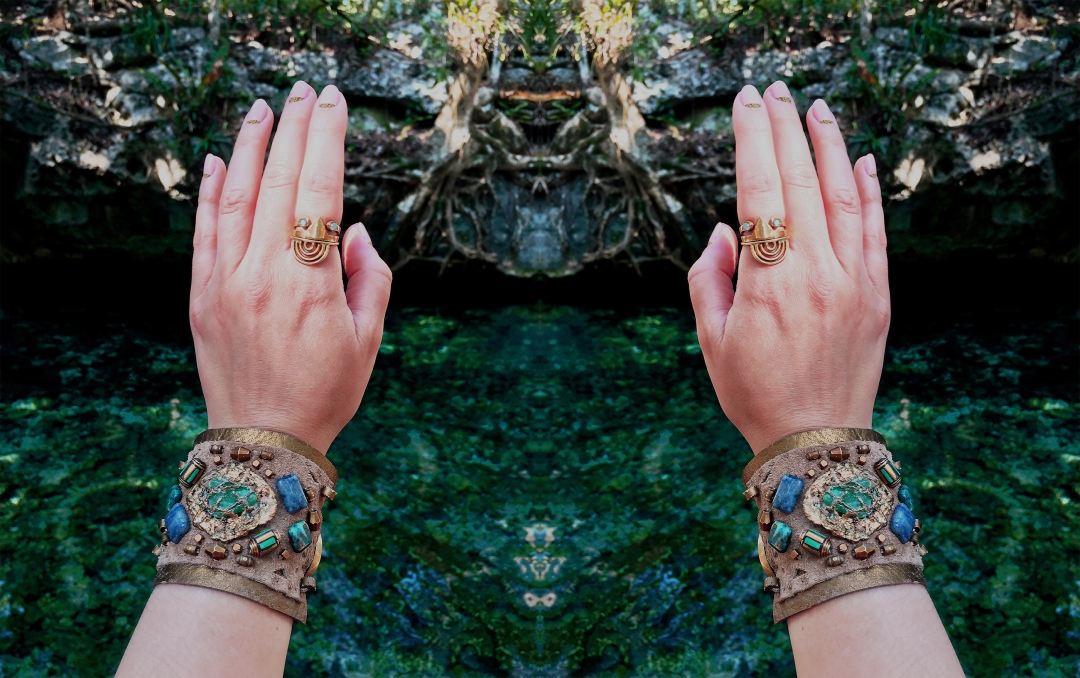
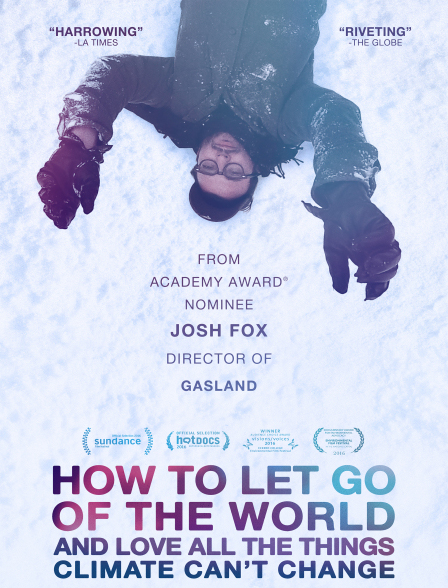
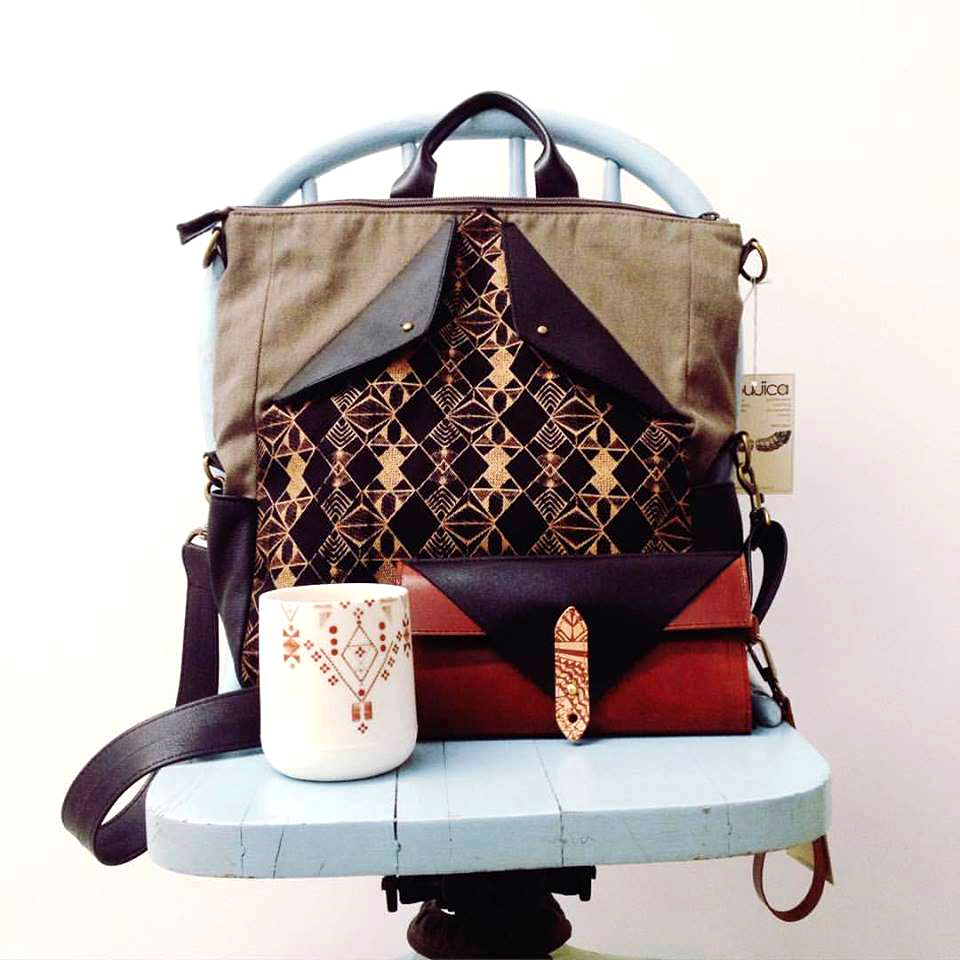
Fabulous!!! ,thank you……..JB
LikeLike
Excellent information to have! A beautiful presentation. Thank you!
LikeLike
Reblogged this on lifexperimentblog and commented:
I had to share this post on sustainable style by http://www.hautemind.com There are so many of us, searching for sustainable fashion & beautiful pieces. We should support each other! Enjoy this post 🙂
LikeLike
Incredibly well-written and enjoyable to read. I am thankful that there are more and more people finding out about sustainability although yes, it’s a long journey ahead of us but if more people are informed, it’s worth the battle!
LikeLiked by 1 person